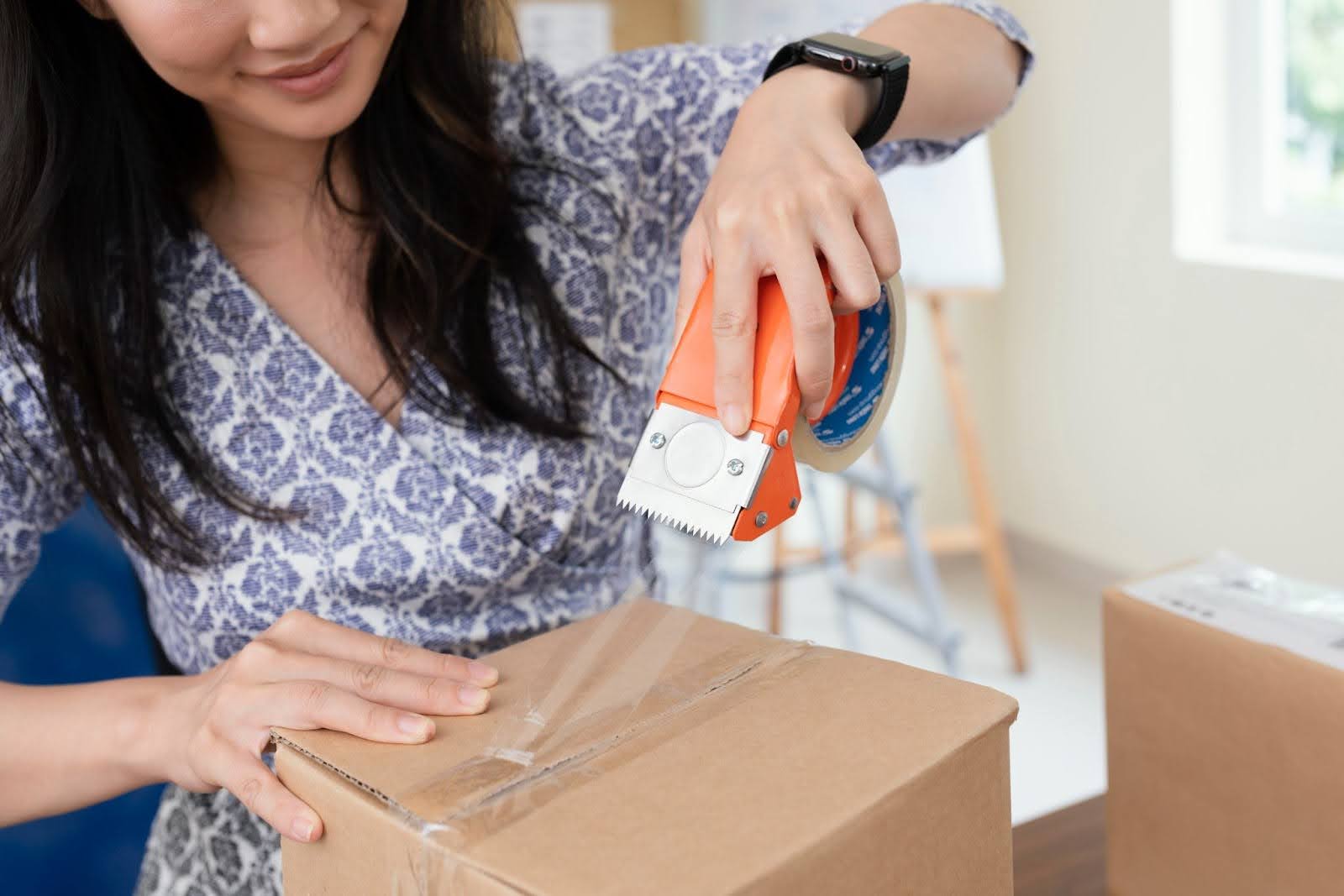Moving can be time-consuming and stressful, especially when transporting fragile items. It’s natural to worry about your valuable items making the trip without getting damaged.
Proper planning and packing techniques are required to ensure your fragile items are shipped safely. To help reduce the stress of packing fragile items for moving, we created this step by step guide on preparing, packing and transporting your fragile items like a pro.
Before we get to the packing, you’ll need to acquire these essential packing materials for fragile items:
- Heavy-duty tape to secure boxes and padding
- Sturdy cardboard boxes of various sizes to pack and transport goods
- Labels and markers to identify boxes
- Bubble wrap to protect items from scratches and impact
- Packing peanuts, newspaper or scrap paper to fill gaps
- Corrugated inserts to separate individual items
- Rope or string to hold packaging in place or to carry bulky items
Depending on your budget, you could purchase these items or save on the cost by sourcing items like boxes or newspapers from your local grocery store and friends.
Once you have the materials, apply the following packing tips and techniques for the smooth transportation of your fragile items to their end destination.
1. Create a list of all your items and label your boxes
List the items you intend to pack based on a grouping of choice, whether by size, purpose, material, or room of the house. After packing, label your boxes to indicate which room to deliver them at your new location.
Remember to mark boxes containing fragile items, so they’re handled accordingly during the loading and unloading process. Make sure nothing heavy is placed on or close to your fragile items.
2. Secure your boxes and items for transportation
To prep your boxes, start with a layer of paper or bubble wrap at the bottom of each box. When packing kitchen items or tableware, use linens or dish towels for an added layer of protection. This extra layer of padding will reduce breakage when boxes are stacked or moved.
Overstuffed boxes will sag or split open, so be conscious about weight. Use generous amounts of heavy-duty tape at each opening, top, and bottom as a final reinforcement.
3. The most effective way to pack fragile items
Take your time when packing fragile items – with preparation, you won’t be prone to cutting corners and making costly mistakes.
Packing techniques vary depending on the items. Plates and glassware vary in size and shape and are notoriously easy to break. On the other hand, electronics contain multiple parts, and furniture is bulky. Depending on what you’re packing, here are some handy tips:
A) Glassware & Ceramics
- Use smaller boxes to minimize movement of your packed items due to significant gaps.
- Individually wrap your breakables with bubble wrap, and if they’re hollow, pack them with paper. Place packing material inside vases, jars, or bowls to avoid cracking. For items with handles, ensure you wrap around them with care and secure them with tape.
- For stackable items such as plates and bowls, add additional paper or bubble wrap in between each plate.
B) Electronics
- Before dismantling your item, take a picture to reference when setting up in the new location.
- Remove cables, accessories and attachments and individually wrap them with either bubble wrap or paper – label with markers if needed.
- For electronics with screens like televisions or monitors, add a layer of protection like bubble wrap and secure it with tape to avoid scratches or damage from impact.
- Repeat the above steps for smaller items like a coffee machine, microwave, toaster or kettle and pack them neatly into boxes instead of leaving them loose.
C) Furniture
- We recommend you wipe your furniture down before packing them away, especially bulky furniture that has not been moved for a while.
- Where possible, dismantle your furniture into smaller pieces and wrap them individually.
- Fragile components like glass should be removed from the larger piece and wrapped with padding. To avoid injury or damage, furniture with sharp corners should be covered with soft padding materials.
D) Pictures and Frames
Items such as paintings, frames, and mirrors should ideally be packed in custom boxes. However, you can always improvise by protecting the corners with cardboard, bubble or plastic wrap around the whole piece. Use crumpled papers, foam or packing peanuts to surround the items within the box and avoid gaps, so there’s no movement when shaking the box.
4. Engage professional help when DIY packing is not wise
Determine how valuable your possessions are and whether a DIY pack and move is the right choice. Expert movers like Soon Seng Transport & Movers, who have 30 years of experience, are equipped with high-quality packing materials and an expert crew to pack your fragile items and ship them with care.
Please book a slot for a free site survey by our team, and in 4 steps, our professional team will handle your fragile items with care and deliver them in perfect condition.





